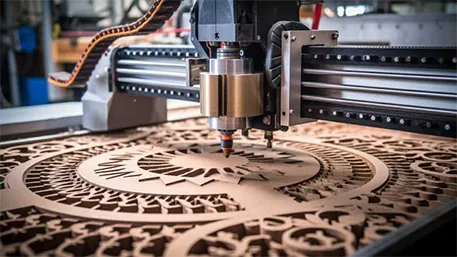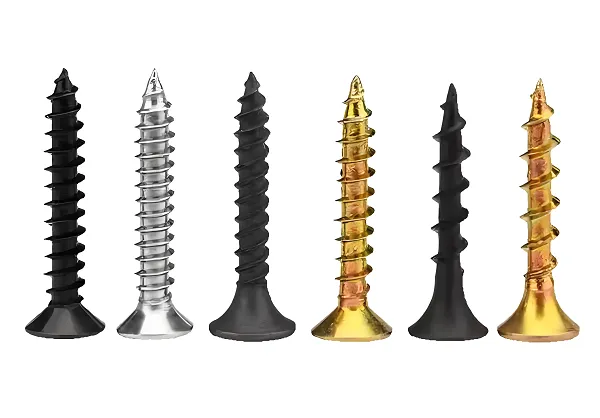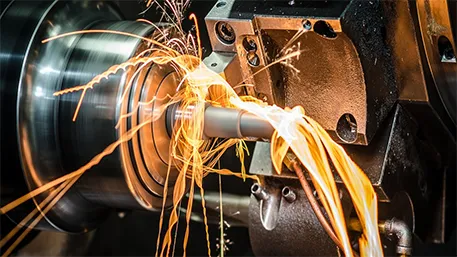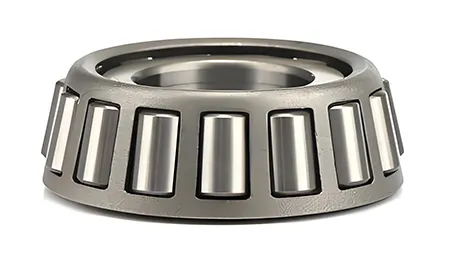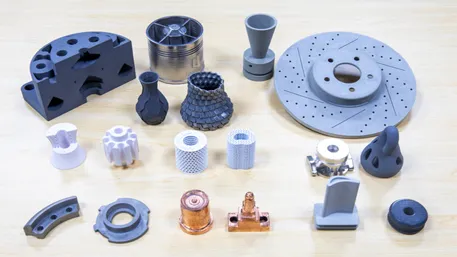In the realm of precision manufacturing, Computer Numerical Control (CNC) machining has emerged as a versatile and powerful technique. One common question that often arises is “What kind of materials can be CNC machined?” The answer encompasses a wide spectrum of substances, each with unique properties that influence the machining process and the final product. This article will explore six major categories of materials that are commonly processed using CNC technology, delving into their characteristics, machining considerations, and typical applications from a technical perspective.

1. Metals: The Workhorses of CNC Machining
Metals are among the most widely used materials in CNC machining, valued for their strength, durability, and conductivity. Aluminum stands out as a popular choice due to its lightweight nature, high strength-to-weight ratio, and excellent machinability. Its relatively low melting point and soft texture allow for fast cutting speeds and efficient chip removal, reducing machining time and costs. In aerospace applications, aluminum CNC-machined components such as aircraft frames and engine parts benefit from these properties, enabling fuel efficiency and structural integrity.
Stainless steel, with its corrosion resistance and high strength, is another staple. Alloying elements like chromium, nickel, and molybdenum give it the ability to withstand harsh environments, making it suitable for medical implants, food processing equipment, and marine components. However, machining stainless steel requires careful consideration, as its high work – hardening rate can cause tool wear. Specialized cutting tools with high – hardness coatings and optimized cutting parameters are often employed to overcome this challenge.
Copper and its alloys, including brass and bronze, are prized for their electrical and thermal conductivity. CNC machining of copper – based materials is crucial in the electronics industry for components like printed circuit board (PCB) connectors, heat sinks, and electrical contacts. These materials can be machined with high precision, but their tendency to form long, stringy chips necessitates effective chip evacuation strategies to prevent tool clogging and ensure smooth operation.
2. Plastics: Versatility and Lightweight Solutions
Plastics offer a wide range of properties, making them suitable for diverse CNC machining applications. Acrylonitrile Butadiene Styrene (ABS) is a thermoplastic known for its impact resistance, ease of machining, and relatively low cost. It is commonly used for prototyping, 3D printing, and consumer product components. During CNC machining, ABS can be easily cut, drilled, and milled, but care must be taken to control heat generation, as excessive heat can cause the material to warp or melt.
Polycarbonate (PC) is another popular plastic with excellent optical clarity, high impact strength, and heat resistance. It is used in applications such as automotive headlights, safety goggles, and electronic device enclosures. CNC machining of PC requires sharp cutting tools and proper coolant application to prevent surface defects like burrs and cracks. The material’s high viscosity during melting also affects the machining process, and optimizing feed rates and spindle speeds can improve the quality of the finished part.
Polytetrafluoroethylene (PTFE), commonly known as Teflon, is renowned for its low friction coefficient, chemical resistance, and high – temperature stability. In CNC machining, PTFE is used for components that require non – stick surfaces, such as bearings, seals, and valve seats. However, its low thermal conductivity and tendency to deform under heat and pressure pose challenges. Machining PTFE often involves using slow cutting speeds, low feed rates, and sharp tools to minimize material deformation and achieve the desired dimensional accuracy.
3. Composites: Strength and Customizability
Composite materials, which are made by combining two or more different materials with complementary properties, have gained significant traction in CNC machining. Fiber – reinforced polymers (FRPs), such as carbon fiber – reinforced plastic (CFRP) and glass fiber – reinforced plastic (GFRP), are particularly popular. CFRP offers an exceptional strength – to – weight ratio, making it ideal for aerospace, automotive, and sports equipment applications.
Machining CFRP presents unique challenges due to the hardness and abrasiveness of the carbon fibers. Specialized diamond – coated cutting tools are required to cut through the fibers effectively. Additionally, delamination (separation of the layers) and fiber pull – out are common issues that can occur during machining. To mitigate these problems, advanced machining techniques, such as high – speed machining with precise control of cutting forces and coolant flow, are employed. GFRP, while less strong than CFRP, is more cost – effective and also widely used in CNC – machined components like boat hulls, wind turbine blades, and automotive body parts.
4. Ceramics: High – Temperature and Wear – Resistant Solutions
Ceramics are materials known for their high hardness, wear resistance, and ability to withstand high temperatures. They are used in applications where extreme conditions are present, such as in the aerospace, automotive, and electronics industries. Alumina (aluminum oxide) ceramics are one of the most commonly machined ceramic materials. They have excellent electrical insulation properties and high chemical resistance.
CNC machining of ceramics is extremely challenging due to their brittleness and high hardness. Abrasive machining methods, such as grinding and lapping, are often used instead of traditional cutting techniques. Diamond – based abrasives are employed to remove material gradually, as conventional cutting tools would quickly wear out or break. Advanced machining technologies, like electrical discharge machining (EDM) and ultrasonic machining, are also being explored to improve the machining efficiency and precision of ceramic materials.
5. Wood: Artistry Meets Precision
Wood may not be the first material that comes to mind when thinking about CNC machining, but it has its own niche applications. CNC routers are commonly used to carve intricate designs, cut precise shapes, and create custom furniture, signage, and decorative items. Hardwoods like oak, maple, and walnut are popular choices due to their strength and attractive grain patterns.
Machining wood with CNC technology requires different considerations compared to metals or plastics. The moisture content of the wood can affect its dimensional stability during machining, so proper drying and conditioning are essential. Tool selection is also crucial, as wood – specific cutting tools with sharp teeth and appropriate flute designs are needed to prevent splintering and achieve a smooth finish. Additionally, dust collection systems are necessary to manage the wood chips and sawdust generated during the machining process.
6. Special Alloys: Meeting Demanding Requirements
Special alloys are engineered to meet specific and often demanding requirements, such as high – temperature resistance, corrosion resistance in extreme environments, or magnetic properties. Nickel – based alloys, for example, are widely used in the aerospace and power generation industries for components like turbine blades, engine casings, and heat exchangers. These alloys have excellent strength and oxidation resistance at elevated temperatures.
CNC machining of nickel – based alloys is difficult because of their high strength and work – hardening characteristics. High – performance cutting tools, such as those made from carbide with advanced coatings, are used. Specialized machining strategies, including high – speed machining and optimized cutting parameters, are required to minimize tool wear and achieve the desired surface finish and dimensional accuracy. Titanium alloys, known for their high strength – to – weight ratio and biocompatibility, are also commonly machined using CNC technology in the aerospace and medical fields, but they present similar machining challenges due to their hardness and low thermal conductivity.
In conclusion, the range of materials that can be CNC machined is extensive and diverse. From metals and plastics to composites, ceramics, wood, and special alloys, each material offers unique advantages and presents specific machining challenges. Understanding these material – specific characteristics and employing appropriate machining techniques is key to achieving high – quality, precision – manufactured components in various industries. As CNC machining technology continues to evolve, it is likely that even more materials will become viable candidates for CNC processing, further expanding the boundaries of what is possible in precision manufacturing.

